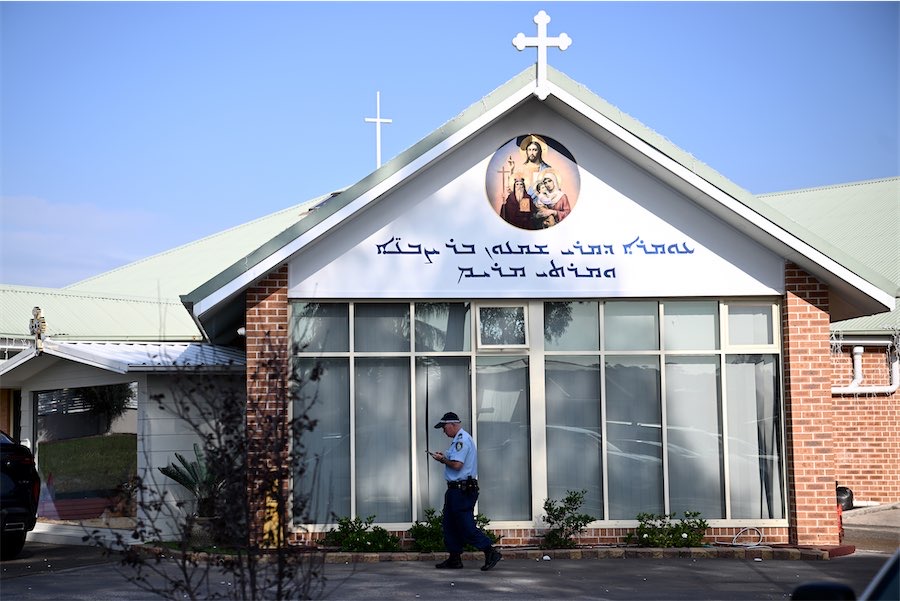While members of the Australian literati will doubtless be keenly anticipating “The Life of Patrick White”, the National Library of Australia’s centenary tribute to Australia’s only Nobel Laureate in Literature, there is a big question mark as to how the general public will respond.
The library and its curator Matthew Jones, seem to have answered this question brilliantly in a show that contains sufficient visual material to satisfy people who have never read White and those who have scrutinised almost every word he put to print.
Jones is the first to admit that White is “not a page turner,” but says, “sometimes people want something that’s got some substance.”
He is reluctant to name favourites, but he considers that “Voss” is White’s most important work, introducing his major themes of the outsider, the visionary in the Australian milieu and the transforming power of the bush. As White wrote to the composer Richard Meale: “I have a feeling that ‘Voss’ is everybody’s albatross, including my own”.
Exhibitions director at the library, Nat Williams, believes the exhibition will take viewers on a journey through the 20th century. White worked on the Australian land, served in World War II, lived with both the intelligentsia of Cambridge and the ordinary people of outer Sydney, and later became a belligerent street protester against uranium mining and even the Sydney monorail.
The exhibition gives insights into all of these, with photographs showing White’s upper-crust background and schooling, then his deliberate rejection of that life for hard work in the semi-rural community. These give visual clarification of the Australia he saw as “the home he loved and loathed in equal measure.”
There are pictures of the family home “Belltrees House,” of White on a rocking horse, of the home he made with his lifelong companion, Manoly Lascaris, at “Dogwoods” near Castle Hill and of their final home in Centennial Park, perhaps the setting for “The Eye of the Storm”. As well, you can see his writing desk and memorabilia from his lesser-known involvement in the Australian theatre and cinema and part of the first draft of the newly-published work, “The Hanging Garden.”
The most visually striking elements of the exhibition are the many large portraits of White, including a painting by Roy de Maistre that reveals White’s critical intelligence, a whimsical impression by costume designer Desmond Digby, a near-satirical work by Brett Whiteley, who depicts White as a geographical promontory, Margaret Woodward’s 1993 pen and ink drawing, and William Yang’s superb photographic portraits, including an outrageous one where White posed as his own corpse.
This is an exhibition which has strong parallels with its predecessor, “Handwriting,” in the way it invites viewers to speculate and look further.
The detail is extraordinary. Who else but White would have owned a bulldog called Soames and a cat called Tom Jones? Who else but White could write letters to Santa and to the fairies in such an elegant hand, the same hand in which he planned for novels like “The Living and the Dead” or “The Aunt’s Story” and wrote up recipes for dishes like “haloumi soufflé”?
And my favourite? A letter to White in 1985 from Salman Rushdie, who writes of “Voss”: “I cannot think when last a book so moved me,” adding, “I have myself written some novels”.
This is a rich exhibition likely to reveal rich treasures.
“The Life of Patrick White,” National Library of Australia, until July 8, 10am-5pm daily.
Images:
Hennessy, Brendan., Portrait of Patrick White, 1984 , gelatin silver print 19.4 x 28.8 cm , National Library of Australia
John Wong, Protesting against the Olympic Stadium, 1972, gelatin silver print 11 x 16.4 cm, National Library of Australia.
White milking the Dream of Penrith, at his farm Dogwoods 1950s, black and white print 6.2 x 8.2 cm, National Library of Australia
Yang, William, 1943- , Patrick White and Manoly Lascaris,Martin Road, Sydney, 1989 , gelatin silver print 34.7 x 45 cm , National Library of Australia
Who can be trusted?
In a world of spin and confusion, there’s never been a more important time to support independent journalism in Canberra.
If you trust our work online and want to enforce the power of independent voices, I invite you to make a small contribution.
Every dollar of support is invested back into our journalism to help keep citynews.com.au strong and free.
Thank you,
Ian Meikle, editor








Leave a Reply